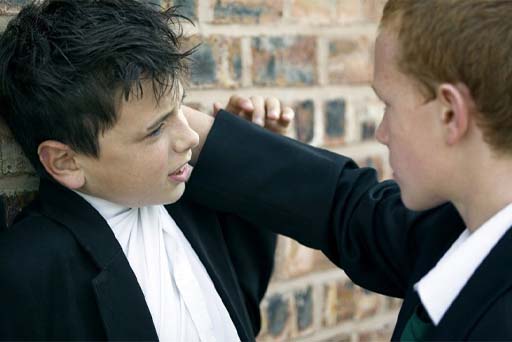3.1 Bullying
Bullying is an extreme form of social pressure.
According to Bullying UK (2019), bullying can be defined as: ‘repeated behaviour which is intended to hurt someone either emotionally or physically, and is often aimed at certain people because of their race, religion, gender or sexual orientation or any other aspect such as appearance or disability.’
If you have any experience of bullying, you will appreciate that bullying can be subtle, cumulative, and not easy to describe to someone. The bullies themselves may be struggling to handle their own situation. In the next activity, you will watch a video created by young people who have experienced bullying.
Activity 6: Anti-bullying campaign
Watch this anti-bullying campaign video and make a note of the main message you take from it.
Discussion
The video expresses some of the ways in which a person can feel the effects of bullying, e.g. blame, manipulation, insecurity. It also makes clear points about the links between bullying and mental health (of both the victim and the bully).
Bullying is a common experience. A large Canadian study on the extent of bullying in young people found that 58% of girls and 68% boys had experienced some form of bullying during a year (Salmon et al., 2018). Types of bullying included physical threats or injuries, ridicule, saying something bad about their race or culture or sexual orientation or their appearance, and applying pressure in social media. Cyberbullying can be particularly difficult to escape as it can spread rapidly through social media (Hill et al., 2017)
Bullying can be particularly hurtful in the context of adolescence where peer relationships are so pivotal. Loneliness can also inflict pain in adolescence, and you’ll explore this next.

